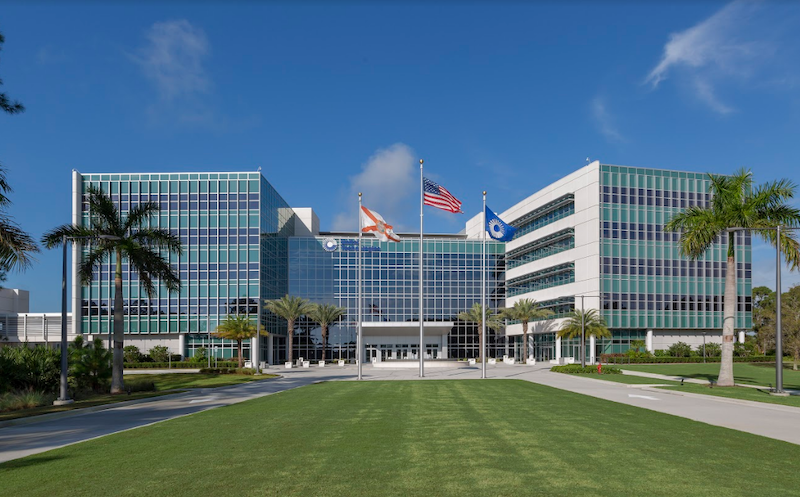Carrier’s world headquarters, the UTC Center for Intelligent Buildings, is the first commercial building in Florida to earn LEED Platinum v4 certification.
The Platinum rating is the highest designation. It was awarded under the version 4 LEED green building program for building design and construction from the U.S. Green Building Council® .
Carrier is a global provider of innovative heating, ventilating and air conditioning (HVAC), refrigeration, fire, security and building automation technologies. The company is a unit of United Technologies Corp. (NYSE: UTX).
“Earning LEED Platinum certification is a significant achievement, as sustainability is a core value of our organization and our portfolio of products,” says Bob McDonough, president of Carrier. “We designed the UTC Center for Intelligent Buildings to push the boundaries of sustainable building design and provide our employees and customers with a model of what’s possible when Carrier’s best technologies are deployed in green buildings. Earning LEED Platinum is a testament to what can be accomplished when advanced building technologies are integrated into intelligent building design.”
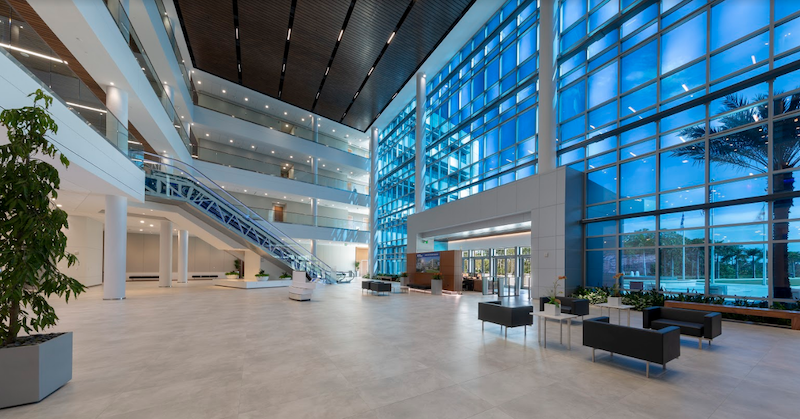
Carrier’s new award-winning building was designed to show what’s achievable through technology integration to increase efficiency, protect people and property, and improve the occupant experience.
Carrier’s product integrations also provide a scalable and repeatable model for total green building design. Examples of sustainable integrations and solutions include: automated Logic’s WebCTRL building management system can use occupancy data from LenelS2 OnGuard to self-adjust air flow and temperatures of the Carrier HVAC systems for optimal comfort and efficiency; and the MyWay app, based on LenelS2’s BlueDiamondTM technology, which eliminates the need to carry a traditional plastic employee badge and allows employees to unlock doors, call elevators, control heating and lighting and much more.
See Also: USGBC receives funding for LEED for Cities and Communities Program
Carrier’s AquaEdge 23XRV chillers operate in a proprietary series-counterflow configuration, and are continuously monitored to ensure optimized performance, increased efficiency and proactive identification of potential issues.
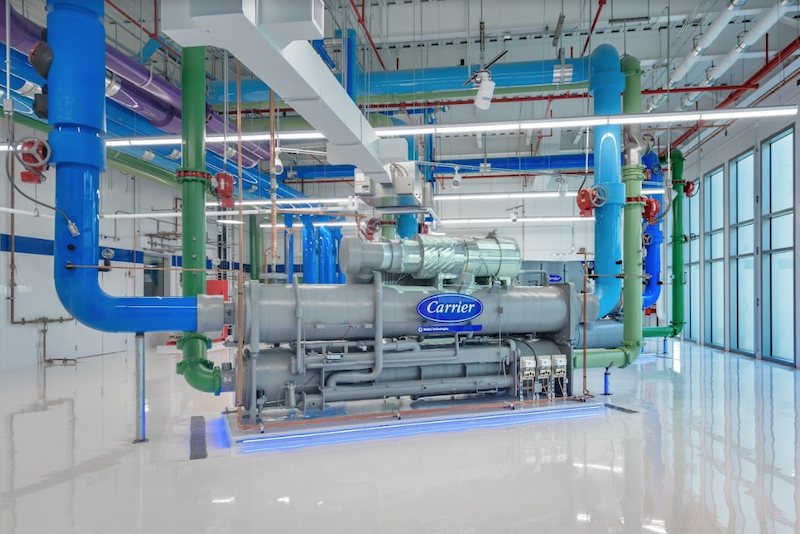
LEED certification also helps with employee productivity and wellbeing. The UTC Center for Intelligent Buildings was specifically designed to COGfx standards – indoor air quality specifications found by Harvard University researchers to double occupants’ cognitive function test scores compared to a conventional building environment.
Carrier’s sustainability leadership began in 1993, when it helped launch the U.S. Green Building Council.
“The innovative technologies found at the UTC Center for Intelligent Buildings are an inspiring example for future sustainable buildings in Florida and beyond,” says Mahesh Ramanujam, president and CEO of the U.S. Green Building Council and Green Business Certification Inc. “Carrier continues to be a valued member for our organization, paving the way for a future where buildings can harmoniously coexist with the environment.”
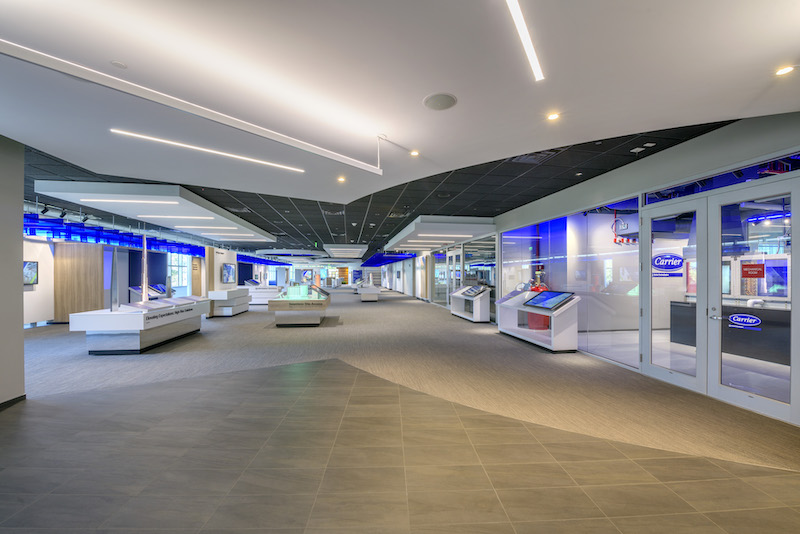
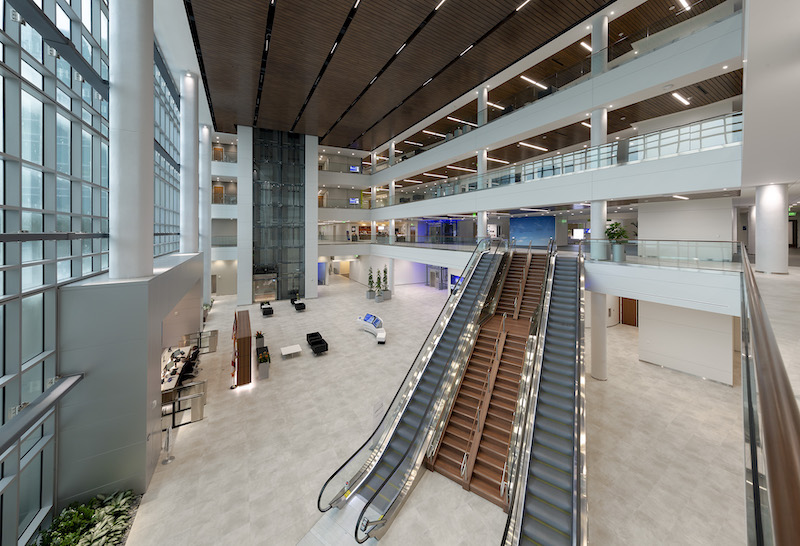
Related Stories
Sustainability | Apr 10, 2023
4 ways designers can help chief heat officers reduce climate change risks
Eric Corey Freed, Director of Sustainability, CannonDesign, shares how established designers and recently-emerged chief heat officers (CHO) can collaborate on solutions for alleviating climate change risks.
Cladding and Facade Systems | Apr 5, 2023
Façade innovation: University of Stuttgart tests a ‘saturated building skin’ for lessening heat islands
HydroSKIN is a façade made with textiles that stores rainwater and uses it later to cool hot building exteriors. The façade innovation consists of an external, multilayered 3D textile that acts as a water collector and evaporator.
Sustainability | Apr 4, 2023
ASHRAE releases Building Performance Standards Guide
Building Performance Standards (BPS): A Technical Resource Guide was created to provide a technical basis for policymakers, building owners, practitioners and other stakeholders interested in developing and implementing a BPS policy. The publication is the first in a series of seven guidebooks by ASHRAE on building decarbonization.
Sustainability | Apr 4, 2023
NIBS report: Decarbonizing the U.S. building sector will require massive, coordinated effort
Decarbonizing the building sector will require a massive, strategic, and coordinated effort by the public and private sectors, according to a report by the National Institute of Building Sciences (NIBS).
Geothermal Technology | Mar 22, 2023
Lendlease secures grants for New York’s largest geothermal residential building
Lendlease and joint venture partner Aware Super, one of Australia’s largest superannuation funds, have acquired $4 million in support from the New York State Energy Research and Development Authority to build a geoexchange system at 1 Java Street in Brooklyn. Once completed, the all-electric property will be the largest residential project in New York State to use a geothermal heat exchange system.
Sustainability | Mar 16, 2023
Lack of standards for carbon accounting hamper emissions reduction
A lack of universally accepted standards for collecting, managing, and storing greenhouse gas emissions data (i.e., carbon accounting) is holding back carbon reduction efforts, according to an essay published by the Rocky Mountain Institute.
AEC Innovators | Mar 3, 2023
Meet BD+C's 2023 AEC Innovators
More than ever, AEC firms and their suppliers are wedding innovation with corporate responsibility. How they are addressing climate change usually gets the headlines. But as the following articles in our AEC Innovators package chronicle, companies are attempting to make an impact as well on the integrity of their supply chains, the reduction of construction waste, and answering calls for more affordable housing and homeless shelters. As often as not, these companies are partnering with municipalities and nonprofit interest groups to help guide their production.
Sustainability | Mar 2, 2023
The next steps for a sustainable, decarbonized future
For building owners and developers, the push to net zero energy and carbon neutrality is no longer an academic discussion.
AEC Innovators | Mar 2, 2023
Turner Construction extends its ESG commitment to thwarting forced labor in its supply chain
Turner Construction joins a growing AEC industry movement, inspired by the Design for Freedom initiative, to eliminate forced labor and child labor from the production and distribution of building products.
Sustainable Design and Construction | Feb 28, 2023
Architecture 2030 launches free carbon calculator for retrofit projects
Architecture 2030’s Carbon Avoided Retrofit Estimator (CARE) tool allows project teams and building owners to accurately quantify the carbon “savings” in retrofit or reuse projects versus new construction.


